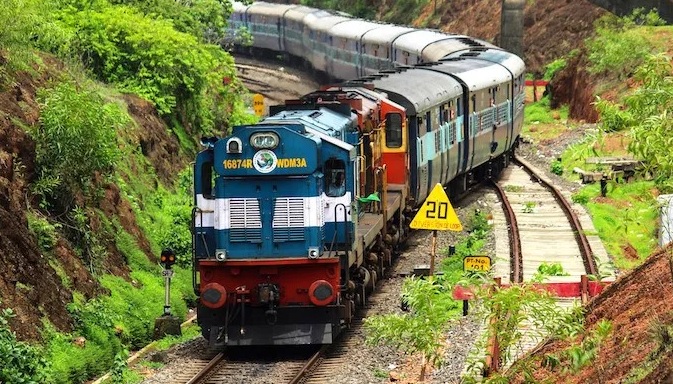The year 2014 marked the end of water woes for 56-year-old Rampravesh Singh, a fruit and vegetable farmer from Thumbo ka Golia, a village in Jalore district, Rajasthan. His income grew 40% in 2015 over his 2013 income, as he switched to growing vegetables and fruits from castor oil, helped by the bountiful monsoon which raised the water level in his well by 9.14 feet, almost double the rise in 2014 that was somewhere close to 4.57 feet.
In contrast, the average farmer in Punjab, Rajasthan and Haryana faces the prospect of having no groundwater left for irrigation by 2025. Groundwater extraction, in these states, generally exceeds the rate at which it is being replenished through rainfall, backflows from irrigation and seepage from canals, other waterbodies and conservation structures.
Increasing use of riverbanks damaging Gharial habitat
Singh’s well bucked a nationwide trend–across India barely 3% wells registered a rise in water level exceeding 4 metres in the year ending January 2016, according to a 2016-Central Ground Water Board (CGWB) report.
Merely around 35% of wells showed any rise in water level, which declined in 64% of wells. Average water levels in January 2016 were lower than the average water level between 2006 and 2015.
Behind the trend of falling water levels is India’s annual extraction rate of groundwater which is over 251 cubic kilometer (cu km)–equivalent to 26 times the water stored in the Bhakra Dam–making India world’s biggest consumer of groundwater, according to a 2012 United Nations Educational, Scientific and Cultural Organization report. With annual extraction rates of 112 cu km, the US and China tie at a distant second.
Over 90% of groundwater is extracted for irrigation, as per the Ground Water Year Book for 2014-15 as released by the CGWB, underscoring India’s dependence on groundwater for irrigation–it provides water for 60% of the irrigated area.
Over the past four decades—when India commissioned roughly half of its 50 biggest dams—around 84% of the total addition to the net irrigated area has come from groundwater, as per a government committee report in 2016 .
The problem–and the advantage–with groundwater is its decentralised access. Consequently, India has an estimated 30 million groundwater structures, according to the July 2016 government report.
Depleting groundwater table
The storage facility is available in 91 major reservoirs of the country for the week ending on May 18, 2017 was 35.622BCM, which is just 23% of combined storage capacity of these reservoirs. The same was 24% for the week ending on May 11, 2017.
The total storage capacity of surveyed 91 reservoirs is 157.799 BCM, almost around 62% of the total storage capacity of 253.388 BCM which is estimated to have been created in the country. As many as 37 reservoirs out of these 91 have hydropower benefit with installed capacity of more than 60 MW.
Should communities manage groundwater?
Local stakeholders can prove to be the best in policing the use of water, and they are more likely to do so honestly because their lives depend on its availability.
Community-driven decentralised water management was the norm in India until about 100 years ago, prior to the development of the modern canal-based flood irrigation system and extraction technology.
Environment & Culture: Aspects of the Same Coin
Total Views: 3,25,065










